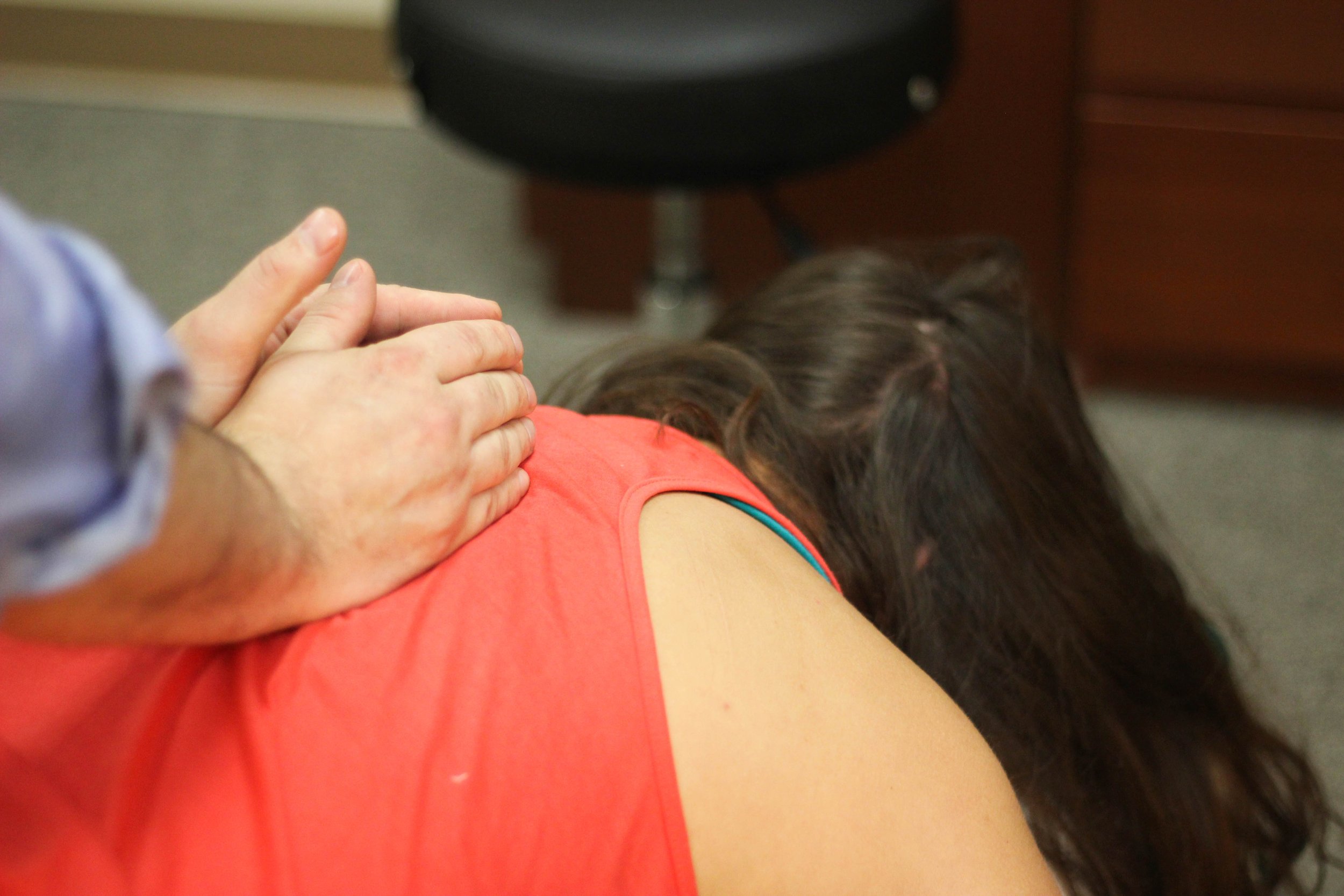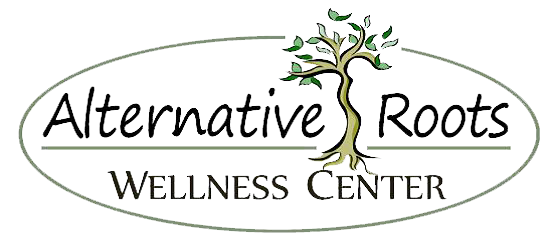
Chiropractic Services
What to expect when you choose us for your chiropractic care:
-
The initial visit usually takes approximately 40-60 minutes and is composed of the following components:
REGISTRATION: You will be asked to fill out the necessary forms before the meeting with the doctor. Our forms are available online or can also be obtained from our office.
HISTORY: Once you have completed the registration process, you will meet with the doctor to discuss your health concerns and past history.
PHYSICAL EXAMINATION: A physical exam will be completed, which will include neurological, orthopedic and postural examinations, as well as muscle and joint functional exams to develop a clinical diagnosis.
TREATMENT PLANNING: The details of your diagnosis will be presented and discussed.
TREATMENT: Treatments in our office may include stretches, exercises, therapy modalities (hot or cold packs), soft tissue relaxation techniques and spinal manipulation/adjustments. You will also be sent home with exercises and stretches to help facilitate your recovery and reduce your dependence on our care.
THE ADJUSTMENT: The doctor will use his hands to contact the area of your body to be treated in order to mobilize your joints. Frequently, a short impulse is applied to the joint which may cause an audible "pop" or "click," similar to when you crack your knuckles. You may sense movement of the joint. The goal of the adjustment includes the following:
Increase joint mobility |Relieve pain | Reduce muscle spasm | Restore optimal joint function.
Also remember there are always other ways to adjust the joints of the body and we will use any means available to us to make sure that you are completely comfortable with your care. -
CHIROPRACTIC MANIPULATION: The doctor will use his hands to contact the area of your body to be treated in order to mobilize your joints. Frequently, a short impulse is applied to the joint. This may cause an audible 'pop' or 'click', similar to when you crack your knuckles. You may sense movement of the joint.
FLEXION DISTRACTION: Flexion Distraction is a gentle technique that utilizes a specialized table which bends and rotates in the center. This allows the doctor to contact specific areas of the spine and pinpoint joints to mobilize. This is a great technique for patients with low back pain, especially those with disc herniations.
SACRO-OCCIPITAL TECHNIQUE: Sacro-Occipital Technique is a method used to balance and restore proper positioning of the spine by utilizing wedge-shaped blocks to counteract torsion and restrictions. As the technique suggests, it begins with the positioning of the sacrum (tailbone) and the occiput (base of the skull that attaches to the spine).
DROP TECHNIQUE: This technique uses special table components or standalone equipment that 'drops' approximately ¼ inch when an impulse is applied clearing the targeted restriction. It is another gentle alternative to manual adjusting therapies.
ACTIVATOR ASSISTED ADJUSTMENTS: The Activator tool is a handheld adjustment tool which places a directed impulse to a restricted joint to assist in its proper motion. These tools have a very fast action and since less force is required when speed is increased this technique is exceptionally gentle. It is an alternative to manual adjusting therapies.
APPLIED KINESIOLOGY: Applied Kinesiology is a diagnostic tool that can be used to help identify imbalances in structure, function, biochemistry, and neurological control. It utilizes concepts and research from both Eastern and Western medicine and alternative therapies and can be helpful when applied appropriately..
EXERCISE REHABILITATION: Exercise rehabilitation is a method used to enhance a patient’s recovery time. It is composed of providing the patient with specific stretches, movements, exercises or activities that complement the doctor’s therapies. As the patient recovers the rehab protocol often changes to reflect the progress gained and functions to prevent future injuries.
MUSCLE RE-EDUCATION: Muscle Re-education uses a variety of therapies and techniques designed to restore proper muscle function and prevent repeat injuries. It often includes correcting posture and re-establishing appropriate muscle control via stretching, exercise and guided activities.
GUA-SHA: Gua-Sha is an Eastern technique that helps remove adhesions, soften scar tissue and relieve “knots” in muscles using a set of simple tools that “strip” a muscle out. This technique is very helpful to restore normal function in areas with old or chronic injuries.
HEAT AND CRYOTHERAPY: These are simple hot and cold therapies that when used appropriately can stop muscle spasms, reduce swelling, support healing and decrease recovery time.
POSITIONAL RELEASE THERAPY: Positional Release Therapy uses specific contacts and muscle positioning to restore proper muscle function. It is a great technique to teach patients so they continue their recovery at home.
-
Chiropractic care is more than just the “adjustment”, it’s addressing the structural and functional health of your joints, muscles and nervous system. Our approach utilizes spinal manipulation to improve your body’s overall function and mobility while including muscle work with take home exercises, stretches and general advice to reduce your recovery time. All these factors together complete the circle of holistic care and get you back to yourself. During your time with us we will teach you how to identify problems before they occur, and provide you with the resources to be proactive with your health and put you back in control.
-
At ARWC, we emphasize high quality chiropractic care and health services with appointments reserved specifically for you. Due to our dedication to your health care, we often have a waiting list for appointment times. If you cancel on short notice, do not show up, or show up very late-it is a lost opportunity for another patient.We understand unanticipated events happen occasionally in everyone’s life and we will take that into consideration, however in our desire to be fair to all patients and maintain a viable practice, the following policies are honored.Thank you for allowing us to be a part of your health care team! We appreciate your understanding and support.
Cancellations:We ask that you please notify the office with a minimum of 24 hours in advance of your scheduled appointment if you need to change or reschedule. This ensures we best assist those patients who are waiting for care. To reschedule or change your appointment, please call (802) 878-1229. If you do not reach someone from the office, you may leave a detailed message on the answering machine.If you are unable to give us the full advance notice for appointments, you will be charged a $50 fee that will be due before your next appointment.*
Late Arrivals:If you are running late, please call our office to reschedule. Your appointment will likely be shortened to accommodate those whose appointments follow yours. On occasion, we may be able to work-in late arrivals; however, this is at the discretion of our staff. Regardless of the length of the treatment given, you will be responsible for payment of the full appointment. If you arrive more than 10 minutes late, we may ask you to reschedule. If this occurs, it will be considered a Missed Appointment.
No Show/Missed Appointments:Anyone who either forgets or consciously forgoes their appointment for whatever reason will be considered a “No-Show” and will be charged $50 for their missed appointment.*Three or more No Shows or Missed Appointments may result in the patient being released from care. We have the right to dismiss from care at any time.*Exclusions to any Missed Appointments include death, severe illness, and as always are at the discretion of the ARWC Staff. We have the right to determine exclusions on a case-by-case basis.

